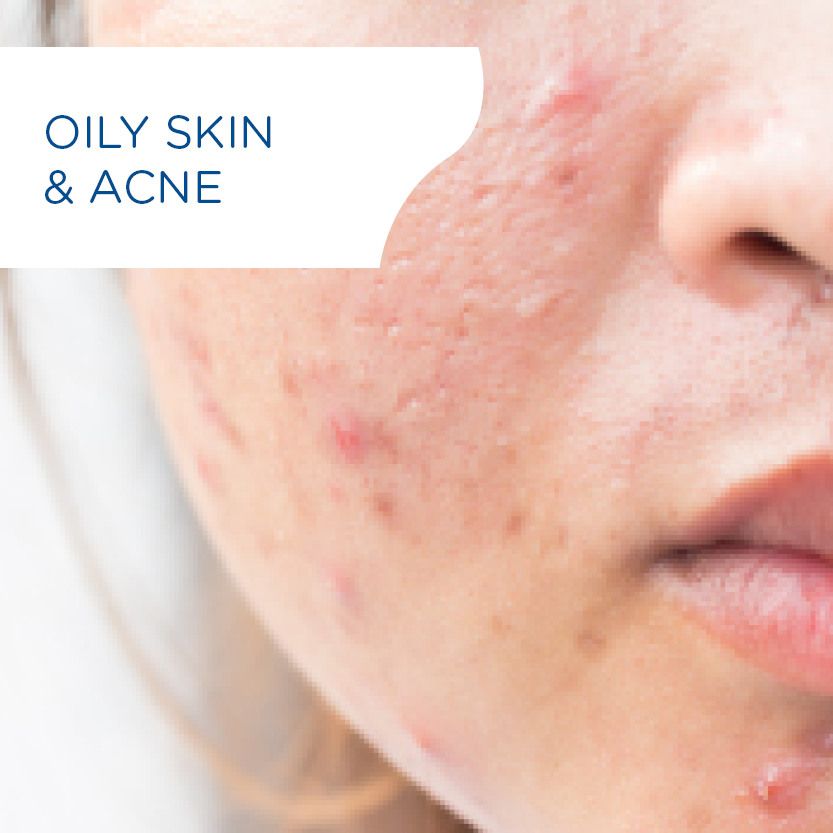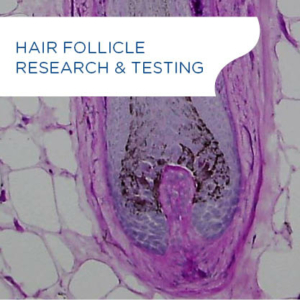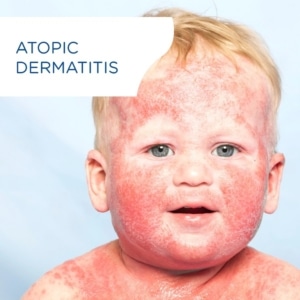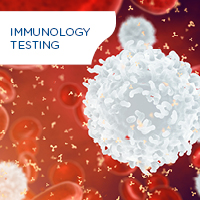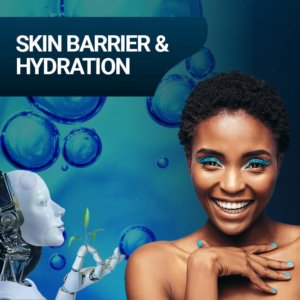Advancing Clinical Skin Research with Clinical Trials, AI-Based Image Analysis, and Expert Insights
November 13, 2025 – Presented by Emma Gray, MSc (QIMA Life Sciences) & Loïc Colomb (QIMA Life Sciences); chaired by Alain Moga (QIMA Life Sciences).
I. Clinical Trials
II. Clinical Sample Analysis
III. Clinical Imaging & Image Analysis
We present examples of solutions that help validate claims related to:
- Skin Aging & Longevity
- Photoprotection
- Oily and Acne-Prone Skin
- Beauty from Within
Science Behind Skin Care: Pre-Clinical Research Insights
November 6, 2025 – Presented by Emma Gray, MSc (QIMA Life Sciences), Samuel Guenin, PhD (QIMA Life Sciences) & guest speaker Julien Demaude, PhD, MBA (Founder & CEO; Symbio Consulting); chaired by Alain Moga (QIMA Life Sciences).
I. Introduction (Julien Demaude, Symbio Consulting)
-
- Latest advancements in pre-clinical skin research
- Emerging industry trends
- Key challenges currently facing the cosmetic sector
II. Skin Longevity & Aging (Emma Gray, QIMA LS)
-
- Skin longevity approaches & Hallmarks of aging
- Pre-clinical solutions to boost claim substantiation
- Models & assays to study mitochondrial dysfunction and dynamics, cellular senescence, and telomere attrition
III. Photoprotection (Emma Gray, QIMA LS)
-
- Why skin sun protection matters
- In vitro & ex vivo models to study photoaging
- SKIN-BIOSENSE®: assessing UV-induced oxidative damage and sunscreen efficacy, in vitro to ex vivo
IV. Oily and Acne-Prone Skin (Samuel Guenin, QIMA LS)
-
- Hallmarks of oily and acne-prone skin
- Models for claim substantiation: 2D & 3D in vitro models, 3D ex vivo models
- New Model: Sebum-supplemented reconstructed human epidermis (RHE) to investigate the interaction between sebum and skin microbiota & for efficacy testing of topical anti-acne treatments
IV. Beauty From Within (Samuel Guenin, QIMA LS)
-
- Pre-clinical solutions for nutraceutical testing
- Re-innervated human skin ex vivo model
- Ex vivo model to study the impact of psychological stress on skin barrier recovery
Next-Gen Oncology Models—From Discovery to Efficacy
October 7, 2025 – Presented by Lara Bellini, PhD (QIMA Life Sciences),& Partner Jenny Worthington, PhD (Director of Science, Axis Bio); chaired by Luis Jimenez, MBA, RAC (QIMA Life Sciences).
I. Discovery Models: Oncology In Vitro Assays (QIMA LS)
-
- Target validation, cytotoxicity, 3D spheroids, co-culture, immune interactions
- Phenotypic screening and mechanistic readouts guiding discovery decisions
II. Efficacy Models: In Vivo Oncology Platforms (Axis Bio)
-
- Validated xenografts, syngeneic/humanized IO models, luciferase-tracked orthotopic systems
- High-content, real-time imaging and digital pathology for efficacy and metastasis
- Case studies: late-stage assets, PK/PD, MOA
III. Managing Tumor Therapy Side Effects: Skin, Hair, and Neurotoxicity (QIMA LS)
-
- Dermatology and neuromodulation panels for preclinical safety
IV. Conclusion and Q&A
Hair Research Perspectives — Pre-clinical and Clinical Solutions for Claim Substantiation
October 2, 2025 – Presented by Leslie Ponce, PhD (QIMA Life Sciences), Anaïs Bobier, MSc (Oxiproteomics) & Guest Speaker Gill Westgate, PhD (Consultant in Hair & Skin Science); chaired by Marta Bertolini, PhD (QIMA Monasterium).
Introduction (Gill Westgate, Consultant in Hair & Skin Science)
- Hair biology
- Hair care trends and challenges
- Latest trends in hair follicle biology research
Our Solutions (Leslie Ponce, QIMA Life Sciences; Anaïs Bobier, Oxiproteomics)
- Advanced preclinical models (in vitro, ex vivo)
- Hair fiber analyes
- Clinical solutions including early-phase clinical trials, clinical imaging, and image analysis
Supporting claim substantiation related to hair growth and density, hair aging and longevity, hair pigmentation, hair and scalp health and microbiome, photo- and environmental protection, hair strengthening, moisturizing, frizz control and smoothness, heat- and chemical-styling protection, and more.
Vitiligo — Research Horizons for Preclinical & Clinical Drug Efficacy Testing
July 10, 2025 – Presented by Dr. Janin Edelkamp (QIMA Life Sciences), Luis Jimenez (QIMA Life Sciences) & Guest Speaker Prof. Thierry Passeron (CHU de Nice & INSERM U1065).
Introduction
- Disease Mechanisms
- Three Objectives in Vitiligo Treatment
- Current Therapeutic Approaches
- Emerging Therapies
- Key Challenges in Drug Development
Our Solutions
- Advanced biological models for vitiligo preclinical research and drug development (in vitro, ex vivo, and in vivo)
- Clinical research solutions (clinical image analysis, non-invasive and invasive clinical sample analysis, early phase clinical trials)
Main Conclusions
Beauty Tech Webinar Series – Part 1: Introducing an Innovative Solution and New Insights Into Skin Homeostasis
April 29, 2025 – Presented by Stanislas Vandier (Wired Beauty), Dr. William Richard (QIMA Life Sciences) & Prof. Tu-Anh Duong (AP-HP).
Hosted by our partner WiredBeauty.
Introduction
- Consortium Vision & Context
- About the Skin Barrier & Atopic Dermatitis
- Skin-Biosense®️ Principle & Ex-vivo Tests
Our Research
- Clinical Study Protocol
- Clinical Study Results
- Main Conclusions From This Study
Field Applications & Future Perspectives for Skin-Biosense®️
Wound Healing & Regeneration – Models and Assays for Research & Efficacy Testing
December 10, 2024 – Presented by Dr. Ilaria Piccini (Münster, Germany) & Dr. Julien Chilloux (Poitiers, France)
I. Introduction
- Basic aspects
- Healthcare challenges
- Current treatments
II. Physiology of Wound Healing
- Hemostasis
- Inflammation
- Proliferation & Granulation
- Remodeling & Maturation
III. Models and Tests to Study Wound Healing
- Acute (physiological) wounds
- Infected wounds
- Chronic wounds
- Keloid scars
IV. Longitudinal Transcriptomic Study of Acute and Chronic Wounds
- Transcriptomic profiling of acute and chronic wounds
- Identification of novel therapeutic targets for wound healing
- New ex vivo models to further investigate the underlying mechanisms of non-healing wounds
Dermatology Drug Discovery and Development – From Target Identification to Clinical Trials
July 11, 2024 – Presented by Jean-Michel Delaval (Newtone Technologies), Dr. Marta Bertolini (Monasterium Laboratory) & Séverine de Ménonville (QIMA Life Sciences)
Explore 9 different case studies spanning all stages of the drug discovery and development process, involving several different skin conditions and diseases
- Target Identification (Ex. on Human hair follicle diseases)
- Target Characterization (Ex. on Psoriasis & Hidradenitis suppurativa)
- Target Validation (Ex. on Atopic dermatitis)
- Lead Identification (Ex. on Melanoma)
- Lead Optimization (Ex. on Psoriasis)
- Candidate Selection (Ex. on Hidradenitis suppurativa)
- In Vitro & Ex Vivo Studies (Ex. on Alopecia areata)
- In Vivo Studies (Ex. on Atopic dermatitis)
- Clinical Trials (Ex. on Vitiligo)
Boost Your Clinical Research – Analytical Methods & Skin Imaging
March 26, 2024 – Presented by Loïc Colomb (Newtone Technologies), Dr. Sabrina Höfling (Monasterium Laboratory) & Dr. Frédéric Dubor (QIMA Life Sciences)
I. Clinical Studies for the Cosmetic Industry
- Relevance and benefits
- Types of clinical studies to assess efficacy
- Limitations encountered during clinical studies
- Approaches to maximize their chances of success
II. Bioanalysis of Non-Invasive Clinical Samples
- What for & How is it performed?
- 4 most common methods to study non-invasive samples
III. Digital Imaging: Capture & Analysis
- Images can reveal different types of information
- Overview of our acquisition devices
- Grading solutions
- Digital imaging analysis
- Smart visualization of your results
IV. Taking Your Research to the Next Level: Insights From 3 Examples
- Skin barrier & hydration
- Acne
- Sensitive skin
- Case study
V. Analysis of Invasive Clinical Samples
- RNA analysis (RNAseq, scRNAseq, in situ hybridization)
- Protein analysis (complex immunostaining, cytokine array)
Oily Skin & Acne – Models and Assays for Research & Efficacy Testing
January 18, 2024 – Presented by Dr. Alix Danoy (Newtone Technologies), Dr. Anasua Pal (Monasterium Laboratory) & Dr. Samuel Guénin (QIMA Life Sciences)
I. Basics of Acne
- Epidemiology
- Physiopathology
- Types of lesions
- Clinical forms
- Relationship between oily skin and acne
II. Role of the Pharma and Dermocosmetics industries in the management of acne
III. What models and tests exist to study acne?
- 2D in vitro
- 3D in vitro
- 3D ex vivo
- Analysis of clinical samples
IV. Other factors contributing to acne development
- Nutritional factors
- Environmental factors
- Mental factors
V. How can clinical imaging bring value to acne clinical investigation?
- Local lesion approach
- Holistic approach
Skin Aging – Models and Assays for Anti-aging Research & Efficacy Testing
October 26, 2023 – Presented by Solène Trevisan (Newtone Technologies), Dr. Janin Edelkamp (Monasterium Laboratory) & Dr. Mara Carloni (QIMA Life Sciences)
I. What is skin aging?
II. What are the factors that determine skin aging?
- Intrinsic factors
- Extrinsic factors
- Environmental factors
III. What are the different levels at which we can study skin aging?
- Clinical level
- Tissular level
- Cellular level
- Molecular level
IV. What models and tests exist to study skin aging?
Hair Biology – Models for Hair Follicle Research and Testing
June 27, 2023 – Presented by Dr. Marta Bertolini (Monasterium Laboratory)
I. Introduction to the Human Hair Follicle
II. in vitro, ex vivo & in vivo models
III. Hair Health & Aging
IV. Hair Follicle Disorders
V. Clinical signs/Clinical imaging
Immunodermatology – Models for Atopic Dermatitis Research and Efficacy Testing
March 21, 2023 – Presented by Anasua Pal (Monasterium Laboratory) & Samuel Guenin (QIMA Life Sciences)
I. Epidemiology of Atopic Dermatitis
II. Physiopathology and clinical signs of Atopic Dermatitis
II. in vitro, ex vivo and in vivo models available
IV. Mimicking S. aureus infection
V. Immune and non-immune cells activation
VI. Mimicking AD like response in 3D models and healthy skin ex vivo
VII. Identification of Biomarkers, prediction of response in diseased skin explants from AD patients
VIII. Mimicking itch-related pathways
IX. Evaluate clinical signs with non-invasive clinical sampling and clinical imaging.
Solutions for early drug discovery and development in the field of Immunology
July 5th, 2022 – Presented by Emilie Schol & Vanessa Agnolutto
I. More than 20 in vitro assays available to study the effects of drugs at each stage of the innate and adaptive immune responses (phagocytosis, cell migration, cell polarization, cell activation)
II. Immune cells models available (PMNs, T cells, B cells, macrophages, dendritic cells, etc)
III. Test principles, key concepts, applications and examples of results
Newtone’s Digital Clinical Imaging for innovative product performance assessment
March 8th, 2022 – Presented by Elodie PRESTAT MARQUIS & Ghislain FRANCOIS
I. Bring value with unique systems and high quality imaging
II. Support clinical teams for high quality imaging
III. Smart algorithms for high quality image analysis
IV. Provide impactful illustrations for WOW effect valorisation
Skin inflammation & innate immunity
Models & assays to evaluate the effects of ingredients on the main actors of the skin inflammation & skin immunity.
November 16th, 2021 – Presented by Emilie Schol & Jérôme Dellacasagrande
I. Study of inflammation from in silico virtual screening to clinical samples bioanalysis.
II. Models to evaluate ingredients and finished product’s efficacy & safety (focus on the use of fresh whole blood & isolated immune cells)
Cell and tissue engineering (3D reconstructed models) for cosmetics and dermocosmetics applications
June 1, 2021 – Presented by Vanessa Agnolutto & Frederic Dubor
I. Innovations in 3D reconstructed models
II. QIMA Life Sciences’ cell bank
III. Examples of healthy reconstructed models
IV. Examples of reconstructed tissues in stress conditions:
- Exposomic (UV, pollution)
- Bacterial infection
- Models of atopic reconstructed tissues (AD, psoriasis)
- Wound healing models / physical alteration
- Preview of a study conducted on explants to mimic the effects of mask wearing on the skin, in the context of Covid-19 pandemic
Skin microbiota and dysbiosis consequences
February 2, 2021 – Presented by Simone de Faria Maraschin & Frederic Dubor
I. Reminder of the barrier functions of the skin
II. General information on skin microbiota
III. Our in vitro and non-invasive clinical samples solutions for the evaluation of the microbiota and its consequences
IV. Examples of case studies:
- Skin microbiota and skin homeostasis
- Focus on the bad smell
- Skin microbiota, oily skin & acne
- Skin microbiota and atopic skin (psoriasis, AD)
A 360° offer in the evaluation of skin barrier and hydration
- October 12, 2020 – e-cosmetic 360° – Presented by Alain Moga & Maxance Vandevyvere
- November 24, 2020 – Presented by Simone de Faria Maraschin & Frederic Dubor
I. What is skin barrier?
II. How to evaluate skin barrier?
III. Our 360° service offer to evaluate skin barrier:
- in silico virtual screening
- in vitro analysis
- Analysis of non-invasive clinical samples
IV. Examples of application of our 360° offer:
- Analysis of Filaggrin expression and of the production of natural moisturizing factors
- Analysis of the synthesis of epidermal and sebaceous lipids
V. Other factors involved in skin barrier function
Bioanalysis of non-invasive clinical samples
June 23, 25 & 30, 2020 – Presented by Alain Moga, Maxance Vandevyvere, Frederic Dubor & Simone de Faria Maraschin
I. Non-invasive sampling methods
- Presentation of the different sampling methods
- Supply chain management and training in the use of techniques
II. Examples of analysis:
- Sebum and epidermal lipids
- Natural moisturizing factors
- Skin microbiota
- Inflammation markers
- Oxidative stress markers
- Odorous molecules (volatile organic compounds)
in silico virtual screening
December 5, 2019 – Presented by Quoc Tuan Do & Samuel Guenin
I. Presentation of Selnergy
- What is Selnergy?
- Selnergy principle
- The databases used with Selnergy
- The limitations of the tool
II. Examples of applications
- Find applications of ε-viniferin
- Find new applications of meranzine
Hair pigmentation and canities
October 24, 2019 – Presented by Samuel Guenin
I. Introduction
- Hair diversity and pigmentation
- Epidemiology of canities
- The underlying causes of canities
- Treatments
II. Biology of hair pigmentation
- Development of the pigment unit of hair follicles and melanocytes
- Hair follicle melanocytes vs epidermal melanocytes
- Regulation of melanogenesis and of hair growth cycle
III. Pathophysiology of canities












